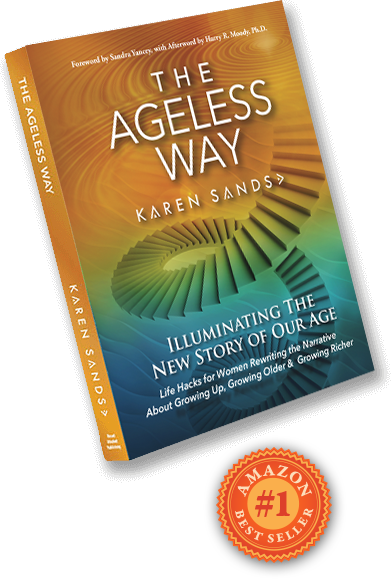 There was a time when the older you were, the more respect you garnered. But this was also a time of disrespect to youth, when children (and women) were supposed to be seen and not heard.
There was a time when the older you were, the more respect you garnered. But this was also a time of disrespect to youth, when children (and women) were supposed to be seen and not heard.
Then in the 60s, the boomers turned this notion on its head, and the mantra flipped to not trusting anyone over 30.
Now, with boomers clearly over 30 themselves, we are poised on the brink of another transformation in perspective. But as stories like Helen Hatton’s (here) show, that transformation doesn’t have to be a return to the past. We are at a time when we can choose mutual respect and intergenerational cooperation. A time when everyone can be seen and heard.
As I talked about in another post, We The People;, this form of cooperation isn’t in and of itself new. We’ve always relied on it to varying degrees, although I think it is safe to say that today, people younger and older than ever before are now a regular part of any form of intergenerational effort. We’ve always had child prodigies as well as remarkable achievers late in life, but only in modern times are we actively bringing the very young and the very old into the conversation—in science and technology, business, politics, art.
Science fairs, internships, and online presentations put the very young in touch with real-world opportunities. Now, the reverse of this is coming true for the other end of the age continuum, as Helen Hatton discovered when she teamed up with her son to bring her crafts store online. As more and more business and governments are discovering as they gear up to re-envision the aging population as vital, active, productive workers, leaders, and innovators for decades to come.
The lines we have carefully drawn between age groups are blurring. As we can see from this article (here), technology is no longer a symbol of the great divide between the generations, as people over 50 become the fastest growing group of social media users, increasing their presence on Facebook by 84% between 2009 and 2011. In fact, women over 65 alone increased their presence on Twitter by a whopping 96% during that time.
Some say that this spells the demise of these media as the younger generations pull out, not wanting “their news feed cluttered up with their parents’ news,” but this prediction ignores two key trends: (1) social media is evolving to be so individualized that no one can clutter your newsfeed but yourself—you choose entirely what and whom you wish to see; and (2) social media, and society as a whole, is becoming more interest-based, with other factors, such as age, being irrelevant. Just as AutoCAD software can’t tell the difference between the 70-year-old architect and the 20-year-old engineer using it to draft buildings of the future, the 95-year-old lab tech and the 10-year-old who discovered a molecule aren’t going to leave a beloved chemistry Facebook group because of the other’s age.
It’s the chemistry that matters.
No transformation is inevitable, however. I see the signs of this trend developing, but life and society can change on a dime. But I believe this is a trend worth developing, that it’s time we reach out across generations and work together based on common interests. A future that has a place for all of us is one with fewer artificial barriers (such as those based on age, gender, race, and class stereotypes) and more genuine connections.
Again, it’s the chemistry that matters. Together, we can discover more than “just” a new molecule. We can discover, we can create, new worlds.
Get a sneak peek into Karen’s Amazon #1 Best Seller, The Ageless Way
Claim your FREE chapter, “Agelessness Across Generations” download here.








Leave a Reply
You must be logged in to post a comment.